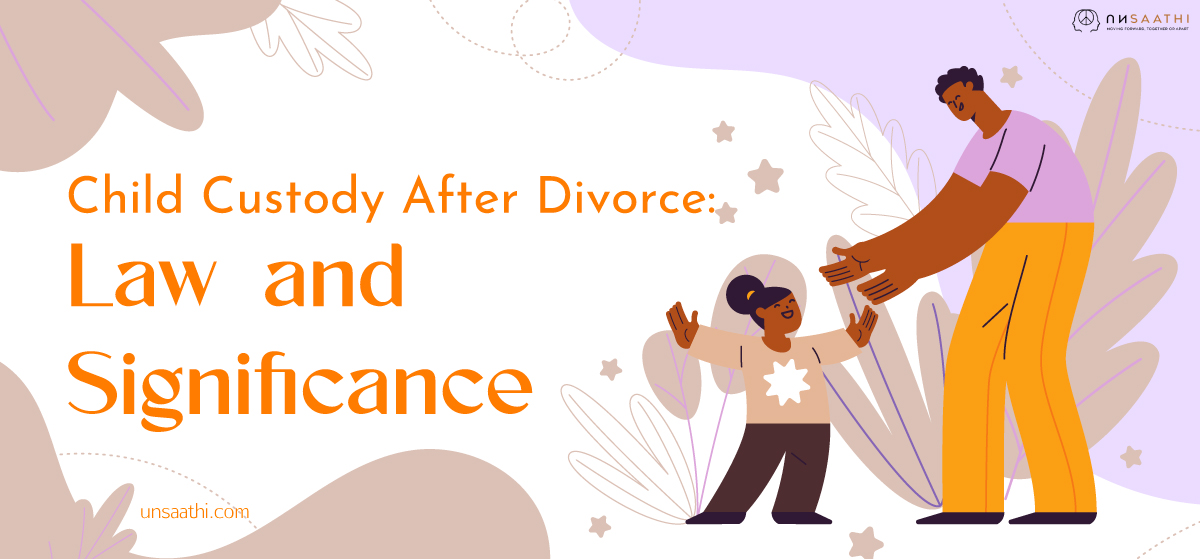Marriage is a sacred connection in diverse cultures and faiths. It is subject to a complex web of religious and secular laws. When marital discord unfolds, the surrounding legal framework for dissolution, or divorce, is where the ground gets bitter and hot. This comparative study analyzes the divorce laws of various major religions practised in India, comparing their similarities and differences and evolution over time.

Hindu Divorce Laws
There was no explicit recognition of divorce in traditional Hindu law. According to Manusmriti, marriage is a sacrament, an indissoluble union. However, the enactment of the Hindu Marriage Act of 1955 acted as a significant reform, which empowered various individuals to break free from their toxic marriages.
Hindu Marriage Act of 1955
The Hindu Marriage Act of 1955 is a Hindu personal law that allows individuals to end their marriage. The law not only provides divorce laws but also holds the provisions for separation, maintenance, custody, annulment of marriage, etc.
Grounds for Divorce – Section 13 of the Hindu Marriage Act of 1955
Section 13 of the Hindu Marriage Act of 1955 has the grounds for divorce. Adultery, cruelty, desertion, conversion, unsoundness of mind, leprosy, venereal disease, renunciation of the world and presumption of death are the grounds for divorce. Furthermore, apart from this, section 13 (2) provides exceptional grounds for divorce for the wife, which includes the presence of more than one wife if the husband is involved in any rape, sodomy case, or even no cohabitation for a year.
Mutual Consent Divorce: Section 13 (B) of the Hindu Marriage Act of 1955
Mutual divorce permits couples to dissolve their marriage by mutual agreement following a period of separation. The court attempts to save their marriage by providing them with a cooling period of 6 months, which can be waived off in exceptional circumstances. Section 13(B) holds the provision for mutual divorce.
Judicial Separation: Section 10 of the Hindu Marriage Act of 1955
Judicial Separation (Section 10) allows couples to separate with a legally binding contract while still married, granting reconciliation time. The grounds for judicial separation are cruelty, adultery, insanity, desertion, etc.
Maintenance and Alimony: Section 24 of the Hindu Marriage Act of 1955
The financially dependant partner can be awarded maintenance.
The court also determines the custody and maintenance of the child. The section 24 of the hindu marriage act empowers the dependent spouse to get maintenance from the other spouse. The Hindu Marriage Act has recently been amended to address the evolving social norms while enabling equality among genders. The provision of temporary maintenance is also mentioned in the Section 144 of BNSS.
Muslim Divorce Laws
There is no personal divorce law for Muslims. The marriage or nikah in Muslims is governed by their law, ‘Shariat’. There is divorce under Muslim law, chiefly through the “Talaq.” However, the methods and forms differ.
- Talaq-e-Ahsan– This form of divorce in Muslim law is most accepted and appropriate.
- Talaq-e-Hasan – This type of divorce allows the husband to say ‘talaq’ one a month for three months.
- Talaq-e-Biddat – This type of talaq is also called ‘Triple Talaq’. Talaq-e-Biddat is a muslim practice which allows the husband to say the word ‘talaq’ three times. This form of talaq was declared illegal and void in India by the supreme court of India.
Khula – Divorce by the wife through the return of dower or compensation.
Mubarat – When the wife and husband both agree to separate, it is called mubarat.
Faskh – The court’s termination of a marriage for particular reasons, such as cruelty or impotence. This judicial separation is irrevocable.
Maintenance or Iddat – A divorced Muslim woman can claim maintenance only during the “Iddat” (waiting period).
Muslim Women (Protection of Rights on Divorce) Act, 1986
Judicial interpretations, as well as the Muslim Women (Protection of Rights on Divorce) Act, 1986, have dealt with the issue of maintenance beyond the Iddat period.
The Muslim Personal Law (Shariat) Application Act of 1937
It governs the personal laws of Muslims in India. This divorce law contains provisions for custody, maintenance along with grounds for divorce, etc.
Christian Divorce Law
There are various laws governing Divorce for Christians. Christian Divorce laws in India are mainly covered under the Indian Divorce Act of 1869 and the Indian Christian Marriage Act of 1872.The grounds for divorce for the Christian are adultery, conversion, cruelty, desertion, unsoundness of mind and leprosy.
Maintenance and Alimony – Section 37 of Indian Divorce Act 1869
Section 37 of the Indian Divorce Act 1869 provides maintenance to the dependent spouse.
Child Custody and Visitation – Guardian and Wards Act 1890
Child custody and visitation disputes are taken care of by the provisions of the Guardian and Wards Act 1890 and the India Divorce Act 1869.
Parsi Divorce Law
The Parsi Marriage and Divorce Act of 1936 governs the divorce matters of the Parsi community. The grounds for divorce are adultery, cruelty, desertion, conversion, unsoundness of mind and failure to consummate the marriage. The Divorce law also allows divorce by mutual consent.The divorce law also has provisions for Judicial Separation for the couples who want to live separately without ending the marriage.
Similarities and Differences in the divorce laws
India is a country with different cultures and communities. Therefore, the need to curate different divorce laws for different communities arises. But let’s dive deep and understand the similarities and differences between the divorce laws of other communities.
Grounds for Divorce
Grounds of adultery, cruelty, and desertion are common across many religions. However, each ground is subject to interpretation and can be applied differently.
Mutual Consent
This is also consistent with the principle of mutual consent divorce recognized by most religions.
Maintenance and Alimony
All religions contain provisions for maintenance and alimony, which can, however, vary in the quantum and tenure. The alimony is provided to the dependent spouse so that they can maintain their lifestyle even after divorce or separation.
Judicial Separation
In many non-Muslim laws, a judicial separation, which gives the separation a legal imposition without giving a divorce, is a standard provision.
Civil Marriages – Divorce Law
The Special Marriage Act, 1954 governs the inter-religious marriages or for the couples who choose to get married in civil courts.
Grounds of Divorce – Section 27 of Special Marriage Act, 1954
Adultery, Cruelty, Desertion, Mental Illness , Venereal Disease and Presumption of Death are the grounds of divorce mentioned in the Section 27 of the Special Marriage Act, 1954.
Mutual Consent Divorce – Section 28 of the Special Marriage Act, 1954
Under Section 28 of the Special Marriage Act, 1954, couples can file for a mutual consent divorce if they want to legally end their marriage in a peaceful manner. The process must begin when a couple has lived apart for at least one year, and both accept it as the only possible outcome to their marriage.
The couple submits a joint petition in the district court as the statements get recorded. The court then imposes a six-month “cooling-off” period, designed for contemplation and possible reconciliation. If not, and both parties still want a divorce after this time, they subsequently file a second motion. After confirmation, the court issues a divorce decree that legally ends the marriage.
Maintenance and Alimony – Section 37 of the Special Marriage Act
The Section 37 of the Special Marriage Act offers permanent maintenance and alimony to the dependent spouse for them to maintain a lifestyle even after the separation or divorce.
Judicial Separation – Section 27(2) of Special Marriage Act
The special marriage act, by section 27(2), provides for judicial separation and not divorce. With court approval, couples can live apart — but still be married.
Divorce Laws – A step towards gender equality
A focus on gender equality in divorce laws is essential, as many discriminatory practices need to be tackled. The judiciary has played a progressive role in ensuring gender justice. From maintenance and alimony to child custody and visitation rights, the divorce laws are there to empower individuals who suffer because of bad marriages.
Evolution of Laws
It is also constant with the idea that all religions-based personal laws have been subjected to changes and turbulent history from the time of birth to ideological changes through legislative and judicial steps.
Adversities and the Road Ahead of Divorce Laws
- Uniform Civil Code (UCC)—The same applies to the UCC. The debate rages on whether to substitute religion-reliant personal laws with a common set of laws for all Indian citizens. There are various views towards the UCC, and it is a multifaceted subject.
- Access to Justice – The divorce law needs to guarantee the right to legal aid and affordable representation in family law matters, particularly for divorce.
- Reconciliation – More recently, the emphasis has increasingly been on mediation and counsel to encourage reconciliation and decrease divorce rates
Conclusion
There are various divorce laws in India. Each religion has its features, but there are also mainstream challenges for all faiths, with common themes and evolving interpretations.
It wouldn’t have been possible to balance these laws and maintain gender equality without the intervention of the Indian Judiciary. As you continue to read about the UCC, you will see that much of the debate over its implementation centres around conflicting ideas about religious versus secular law. As society progresses, divorce laws need to evolve as well to ensure that they align with contemporary social values and principles of equality and justice for everyone involved.




